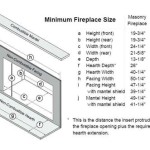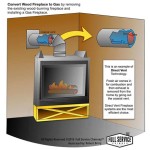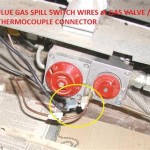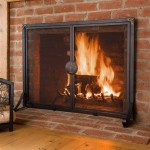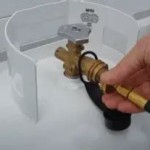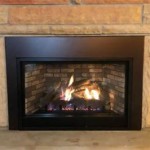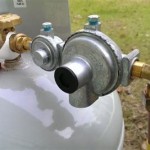Replacing Old Gas Fireplace Inserts
Gas fireplace inserts offer a convenient and efficient way to heat a room and create a cozy atmosphere. However, like any appliance, gas fireplace inserts eventually require replacement. If your existing insert is showing signs of age, such as rust, cracks, or inefficient operation, it may be time to consider a replacement. This article will guide you through the process of replacing an old gas fireplace insert, outlining the key stages involved and providing essential considerations for making an informed decision.
Assessing the Need for Replacement
Before embarking on the process of replacing your gas fireplace insert, it is crucial to assess its condition and determine whether a replacement is truly necessary. Here are some key indicators that suggest a replacement may be beneficial:
- Age: Gas fireplace inserts typically have a lifespan of 15-20 years. If yours is nearing the end of this range, it may be approaching the point of requiring replacement.
- Rust and Corrosion: Rust and corrosion can weaken the metal components of the insert, potentially compromising safety and functionality.
- Cracks and Damage: Cracks in the firebox or other structural components indicate a potential safety hazard and can affect the insert's efficiency.
- Inefficient Operation: If your insert is not heating the room adequately or is consuming excessive fuel, there may be issues with the burner, pilot light, or other internal components.
- Safety Concerns: Any signs of leaks, malfunctions, or inadequate ventilation should be addressed immediately and may necessitate a replacement.
If your gas fireplace insert exhibits any of these signs, it is wise to consult with a qualified HVAC professional to assess the severity of the issues and determine whether replacement is the optimal solution.
Choosing a Replacement Gas Fireplace Insert
Once you've decided to replace your existing insert, the next step is to choose a suitable replacement. Consider the following factors when making your decision:
1. Size and Dimensions
Measure the existing fireplace opening carefully to ensure the new insert will fit seamlessly. Allow for adequate clearance around the insert for proper ventilation and safety. You may need to adjust the existing opening to accommodate a new insert.
2. Heat Output
Choose an insert with an appropriate heat output for the size of the room you wish to heat. Oversizing the insert can lead to uncomfortable temperature fluctuations, while undersizing it may not provide sufficient warmth. Consult with a professional to determine the appropriate heat output for your space.
3. Efficiency and Fuel Consumption
Modern gas fireplace inserts are highly energy-efficient. Look for models with high AFUE (Annual Fuel Utilization Efficiency) ratings. Efficient inserts consume less fuel, saving you money on operating costs and reducing your environmental impact.
4. Features and Aesthetics
Gas fireplace inserts come in a variety of styles and features, including:
- Log sets: Choose from realistic ceramic logs, gas logs, or other decorative options to enhance the aesthetic appeal.
- Remote control: Some inserts offer remote control functionality for convenient operation.
- Variable flame height: Adjust the flame height to create different ambiance and heat levels.
- Safety features: Look for inserts with safety features like automatic shut-off valves and overheat protection.
5. Installation and Cost
Consider the cost of installation and any potential modifications needed to accommodate the new insert. Some models may require specialized installation techniques. Obtain quotes from multiple contractors to ensure you are getting the best price.
6. Warranty and Manufacturer Support
Choose a reputable manufacturer with a comprehensive warranty program to ensure you have adequate protection against defects or malfunctions. Check the warranty terms carefully and inquire about the availability of spare parts and technical support.
Installation and Maintenance
Once you have selected a replacement gas fireplace insert, the next stage is installation. It's critical to hire a qualified HVAC professional for this process. They will have the necessary experience and expertise to ensure proper installation, adherence to safety regulations, and optimal performance of the new insert.
After installation, it's equally important to maintain your gas fireplace insert to ensure its longevity and efficiency. Regular maintenance involves:
- Cleaning the glass: Use a fireplace glass cleaner to remove soot and debris from the glass door.
- Inspecting the burner and logs: Check for any signs of damage or wear, and replace them as needed.
- Cleaning the vent: Ensure the vent is free of obstructions to allow for proper airflow.
- Checking the gas connections: Inspect the gas connections for any leaks or damage.
Following these maintenance guidelines will help maintain the functionality, safety, and efficiency of your gas fireplace insert for years to come.

Remodel Or Upgrade Your Existing Fireplace The Kernel Burner

Fireplace Fix Easy Tips To Renovate Retrofit And Replace An Old Fire Touchstone Home S Inc

How To Modernize And Update A Gas Fireplace We Love Fire

How To Update An Old Gas Fireplace

How To Modernize And Update A Gas Fireplace We Love Fire

How To Install A New Gas Fireplace Insert This Old House

Replacing Your Condo Fireplace Vancouver Gas Fireplaces

Remodel Or Upgrade Your Existing Fireplace The Kernel Burner

How To Install A New Gas Fireplace Insert This Old House

Gas Fireplace Inserts Fireplacesdirect Com
Related Posts

